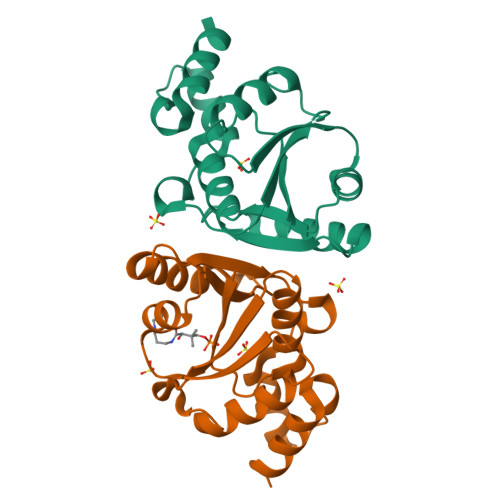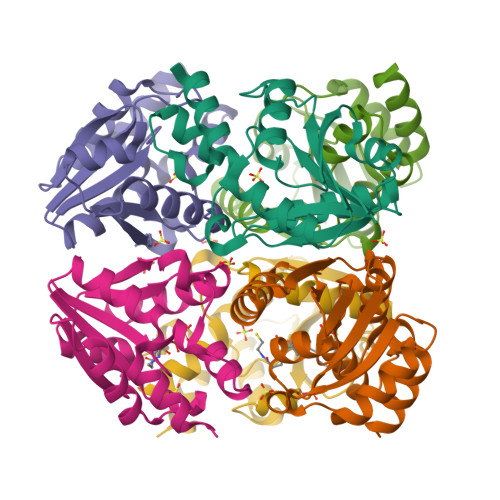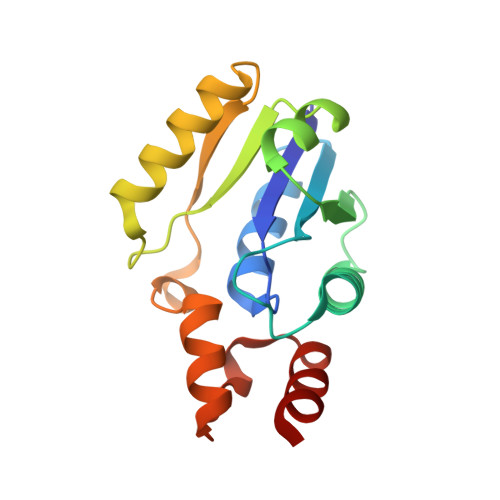The Crystal Structures of Phosphopantetheine Adenylyltransferase with Bound Substrates Reveal the Enzyme'S Catalytic Mechanism
Izard, T.(2001) J Mol Biology 315: 487
- PubMed: 11812124
- DOI: https://doi.org/10.1006/jmbi.2001.5272
- Primary Citation of Related Structures:
1GN8, 1QJC - PubMed Abstract:
Phosphopantetheine adenylyltransferase (PPAT) is an essential enzyme in the coenzyme A pathway that catalyzes the reversible transfer of an adenylyl group from ATP to 4'-phosphopantetheine (Ppant) in the presence of magnesium. To investigate the reaction mechanism, the high-resolution crystal structures of the Escherichia coli PPAT have been determined in the presence of either ATP or Ppant. Structural details of the catalytic center revealed specific roles for individual amino acid residues involved in substrate binding and catalysis. The side-chain of His18 stabilizes the expected pentacovalent intermediate, whereas the side-chains of Thr10 and Lys42 orient the nucleophile for an in-line displacement mechanism. The binding site for the manganese ion that interacts with the phosphate groups of the nucleotide has also been identified. Within the PPAT hexamer, one trimer is in its substrate-free state, whereas the other is in a substrate-bound state.
Organizational Affiliation:
Department of Structural Biology, St. Jude Children's Research Hospital, 332 North Lauderdale Street, Memphis, TN 38105-2794, USA. Tina.Izard@stjude.org


















